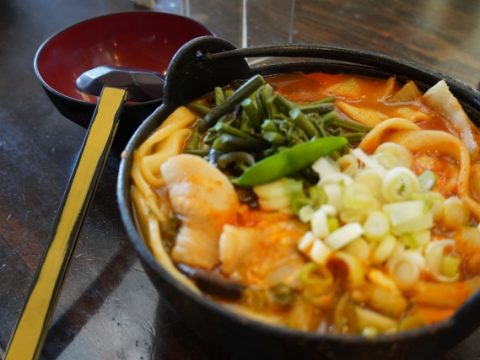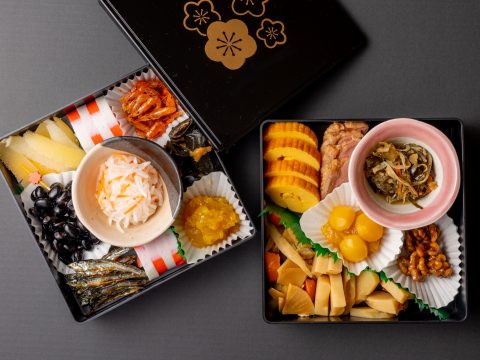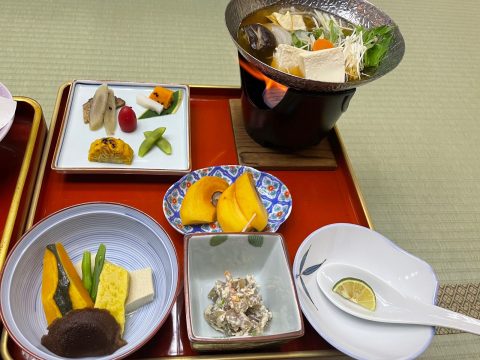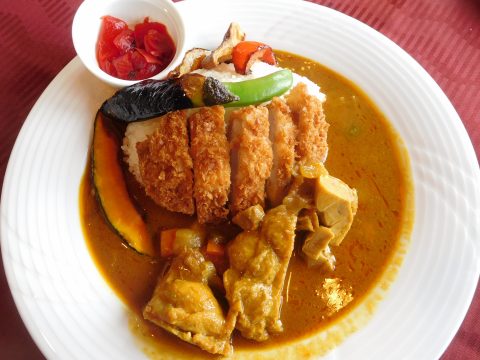Onigiri (おにぎり)
JAPANESE FOODS
03.07.2023
Onigiri or rice ball, is a Japanese food made from white rice and shaped into triangular or cylindrical shapes, often wrapped in nori. In the past and today, due to its shape and size, onigiri has even used as portable food. Let’s take a deep look at it!

What’s the history behind?
The history of onigiri dates back to the Nara period (710-794), when the use of chopsticks was not yet widespread, so small rice balls that were easy to carry began to be made. After that, in the Heian period (794-1185), rice was made into small rectangular shapes known as tonjiki, so they could be piled on a plate and easily eaten at picnics.
From the Kamakura period (1185-1333) to the Edo period (1603-1867), it became a quick meal: salt was added to the rice, and then shaped into balls; that was it, ready to eat! It wasn’t until the mid-Edo period when nori was used, because it was barely available.

But… what’s inside?
Traditionally, umeboshi (pickled Japanese plum), okaka (bonito flakes) and tsukudani (seaweed, seafood or meat that has been simmered in soy sauce and mirin) have long been used as fillings for onigiri.
But actually, there are tons of them! For example, we have salmon, kaki (pork), roe (such as mentaiko or tarako), negitoro (tuna and green onion), tuna mayo, etc.

Other variations
Yaki-onigiri or grilled rice ball is often served at some izakaya. First, it’s shaped by compacting the rice, then grilling it until brown and coating it with soy sauce or miso. It usually doesn’t have any fillings.
Age-onigiri or fried rice ball is a new trend of onigiri which is also an interesting variation to try.

My favorite onigiri
Sometimes, when I’m in a rush or when I don’t have anything for breakfast, I make a brief stop at the convenience store and buy this onigiri. It became one of my “must-try” when visiting Japan: tuna mayo onigiri. As you can guess by reading this word, it’s filled with tuna mixed with mayonnaise. It might sound simple, but the combination is amazing. I’ve tried other kinds of onigiri, but for me, none of them beats tuna mayo onigiri.
Besides, I have also been to a really popular restaurant in Tokyo specializing in onigiri, so I had the chance to try “unusual” flavors (in terms of onigiri) such as karaage, bacon and cheese, kimchi, and even wasabi! (not the best choice…).
So, grab a rice ball and hang around Japan!


Carmen Alvarez
Carmen grew up in a city in southern Spain. After graduating from university, she decided to move to Tokyo to study Japanese. She enjoys walking the streets of Japan, discovering new places and trying different Japanese dishes.
Read previous articles by the writer
Read latest articles
KEYWORDS
- # Resume
- # alcohol
- # Rice
- # Soup
- # winter food
- # Fast Food
- # seafood
- # spicy foods
- # raw food
- # fermented food
- # Transportation
- # MEAT
- # Edo culture
- # suits
- # clothing
- # drink
- # fish
- # seasoning
- # Japanese New Years Foods
- # Toshikoshi soba
- # Osechi Ryori
- # Ozoni
- # Christmas
- # Japanese fusion pasta
- # Wafu Pasta
- # Japanese Hot Pot
- # なべ
- # 鍋
- # Miyazaki
- # Chicken Nanban
- # Karamen
- # Autumn Wagashi
- # Mushi-yokan
- # Imo-yokan
- # Japanese Autumn Fruits
- # Autumn
- # Vending Machine
- # fall
- # dango
- # Chestnut rice
- # saury
- # Mushroom
- # Rice vinegar
- # Japanese condiments
- # 調味料
- # Sake
- # Mirin
- # Soy sauce
- # Japanese Noodles
- # Udon
- # Ramen
- # Yakisoba
- # Soba
- # Japanese Seaweed
- # 海藻
- # かいそう
- # Payslip
- # Training
- # Japanese summer foods
- # 和菓子
- # Wagashi
- # ryokucha
- # 夏
- # 飲み物
- # Ramune
- # ラムネ
- # Pokari Sweat
- # ポカリスエット
- # Calpis
- # カルピス
- # Mugicha
- # ume
- # 梅
- # うめ
- # umeshu
- # job hunting
- # tofu
- # Recruitment in Japan
- # miso
- # Japanese cuisine
- # Yellowtail and bonito
- # Children’s Day
- # Kashiwa Mochi
- # Chimaki
- # fruits
- # Kusamochi
- # Types of Agriculture in Japan
- # bread
- # パン
- # パン屋さん
- # japanese bread
- # shokupan
- # meal blead
- # anko bread
- # 桜
- # さくら
- # cherry blossom
- # visa
- # hanami
- # omotenashi
- # sakura
- # おもてなし
- # Japanese hospitality
- # oshibori
- # wet hand towel
- # hand towel
- # restaurant
- # Commuting in Japan
- # Women-only cars
- # Exit gate
- # japanese train
- # train
- # valentine
- # Japanese sweets
- # 朝食
- # Japanese Breakfast
- # Breakfast
- # Japanese
- # 日本
- # healthy
- # persimmons
- # hoshigaki
- # HR
- # work in Japan
- # jinji ido
- # corporate systems
- # Japanese work culture
- # bento
- # ekiben
- # shinkansen
- # omiyage
- # train station
- # Japanese culture
- # work culture
- # mentaiko
- # umeboshi
- # Japanese snacks
- # potato chips
- # Japanese potato chips
- # Japanese writing
- # seaweed
- # konbu
- # ocean foods
- # shio konbu
- # dashi
- # miso soup
- # food processing
- # pear
- # nashi
- # sweet potato
- # japanese sweet potato
- # stingray
- # satsuma imo
- # food value chain
- # homecooking
- # agriculture
- # Japanese homecooking
- # farming
- # nikujaga
- # shojin ryori
- # meat and potatoes
- # traditional foods
- # comfort food
- # buddhist food
- # manufacturing
- # factory
- # eihire
- # vegetarian
- # food and beverage
- # izakaya
- # yatai
- # japanese festival
- # taiyaki
- # matsuri
- # summer
- # Ikayaki
- # smart agriculture
- # shaved ice
- # kakigori
- # かき氷
- # summer dessert
- # Japan
- # Japanese foods
- # dessert
- # fruit
- # matcha
- # icecream
- # Pikcup
- # Pikc up
- # Pcikup
- # skilled labor visa
- # working visa japan
- # Dineer Table in Japan
- # Japanese manner
- # Japanese food
- # Japanese Table Manner
- # Chopsticks
- # Japanese traffic signs
- # traffic information
- # road rules in Japan
- # chocolate
- # green tea
- # Osaka
- # Work Japan
- # Japanese company
- # ikura
- # sushi
- # nigiri
- # wasabi
- # PCIK
- # PICK UP
- # PICK
- # PICKUP







